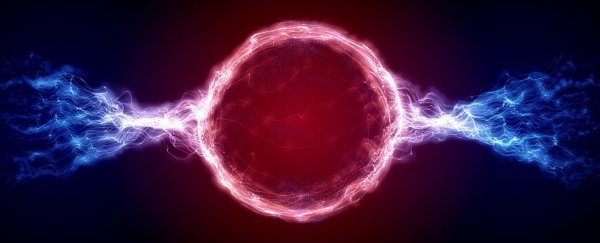An Australian fusion startup called HB11, a spin-off from the University of New South Wales, claims to have found a way to revolutionize current nuclear fusion technology, potentially laying the groundwork for a new era of power generation — without running the risk of a nuclear meltdown.
The startup's leadership doesn't mince words.
"We are sidestepping all of the scientific challenges that have held fusion energy back for more than half a century," director Warren McKenzie told New Atlas.
Fusion energy, as its name suggests, harnesses the energy released from when atomic nuclei fuse together, as opposed to fission, which splits nuclei apart to generate electricity.
Fusion has been the holy grail of energy production for decades, but scientists have yet to achieve a reaction that spits out more energy than it needs to get going — though they're starting to get close.
If that sounds too good to be true, it's worth noting that there does appear to be drama around the claims. A press release about the technology on the New South Wales University site disappeared — though a backup copy appears to still be online. Futurism has reached out to the university to ask about the missing release.
The backup release makes extraordinary claims. It says HB11 has found a new way that does away with the current fusion energy approach that requires inordinately high temperatures and pressure levels to work.
In theory — right now it's not much more than a theory — HB11's approach is extremely simplified and significantly cheaper. The technique relies on hydrogen and a boron B-11 isotope — instead of extremely rare and expensive radioactive isotopes such as tritium — and employs a specialized set of lasers to get the reaction going.
Inside a "largely empty metal sphere," fuel pellets of HB-11 isotopes are shot at with two lasers to trigger an "'avalancee' fusion chain reaction," as the company describes it in a statement.
"You could say we're using the hydrogen as a dart, and hoping to hit a boron , and if we hit one, we can start a fusion reaction," McKenzie told New Atlas. "That's the essence of it."
"Creating fusion using temperature is essentially randomly moving atoms around, and hoping they'll hit one another, our approach is much more precise," he added.
The process even skips the "need for a heat exchanger or steam turbine generator" and can feed an electrical flow "almost directly into an existing power grid," according to the company's statement.
No nuclear waste, no steam, zero chance of a nuclear meltdown. It almost sounds too good to be true — but the startup still has a lot to prove. McKenzie admitted himself he doesn't know if or when the startup's idea could be turned into a commercial reality.
"I don't want to be a laughing stock by promising we can deliver something in 10 years, and then not getting there," he told New Atlas.
This article was originally published by Futurism. Read the original article.
